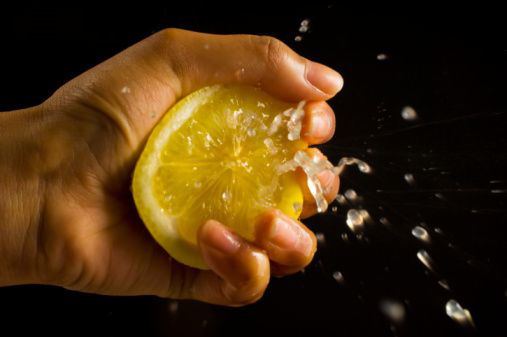Delft researchers have made hydrogels with tunable stiffness that seem promising for culturing stem cells and cleaning up oil slicks at sea.
Whether it is for applications in biomedical industry, petrochemicals or cosmetics, you don’t want your hydrogel to be too slimy or too stiff. Dr. Rienk Eelkema, and colleagues from his Advanced Soft Matter group (AS faculty), have recently discovered a simple way to make gels at room temperature with tunable stiffness thereby solving a long-standing problem of adjusting the texture. They published an article about it earlier this month online in Nature Chemistry.
Gels contain networks of molecules which hold the surrounding liquid and prevent it from flowing. In order to control the structure of these networks, the researchers mixed the two building blocks of hydrogel, cyclohexane trishydrazide and an aldehyde with water and left them to react at room temperature under the influence of a catalyst. The more catalyst they added, the stiffer the gel became.
“As a catalyst we used a phosphate buffer, but you could also use acetic acid or hydrochloric acid”, says Eelkema, who was awarded a Veni grant by the Netherlands Organisation for Scientific Research in 2009 to carry out this research. “Basically, any kind of acid will do the job.”
Eelkema is now collaborating with a biomaterials company (Nano-FM) which is specialized in the development of synthetic micro-environments for mammalian cell growth. He thinks the tunable gels could be used to grow stem cells on.
There is some debate going on within the stem cell research community about whether the stiffness of the growth medium influences the way stem cells differentiate. “Some stem cell researchers believe that this greatly depends on the stiffness”, Eelkema says. “For these researchers it is interesting to be able to tune the stiffness without changing the chemical composition of the gel.”
The conventional way to change stiffness is by adding more or less gelator molecules. By doing so you also change the chemical composition of the gel and that is not always wanted. With the new technique the chemical composition practically stays the same, the amount of catalyst molecules being negligible compared to the overall amount of molecules in the mixture.
Besides the biological application Eelkema believes such gels might also be used to clean up oil spills at sea since the gelator powder is solvable in water and forms a gel at room temperature.
How does the catalyst exactly influence the gel then? The acid influences the speed at which the gelator molecules are formed, after which they start to stack into fibres. Those fibres ultimately form a network (a gel). If you add a lot of acid you increase the speed with which the molecules are formed and the higher the speed the more mistakes occur in the stacking process and the more the fibres branch off. More mistakes leads to a stiffer gel.
One of the co-authors of this paper, Eduardo Mendes, recently also published (1) an article about a super gel in Nature together with Prof. Stephen Picken (AS faculty) and researchers from the Nijmegen University. That gel powder, one kilogram of which could turn an Olympic swimming pool into a giant jelly within minutes, differed in the sense that it was made of polymers instead of small molecules like the gel described this month in Nature Chemistry.
Job Boekhoven, Jos M. Poolman, Rienk Eelkema et.al., Catalytic control over supramolecular gel formation, Nature Chemistry, published online 7 April 2013
(1) Hyperlink: http://www.delta.tudelft.nl/26347



Comments are closed.